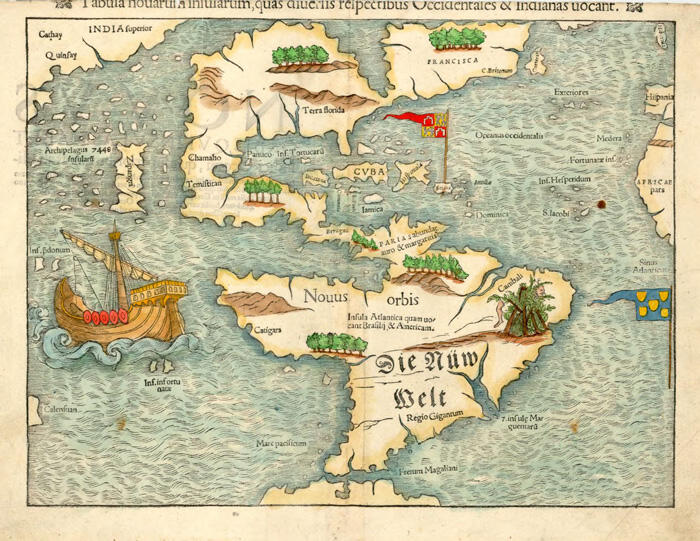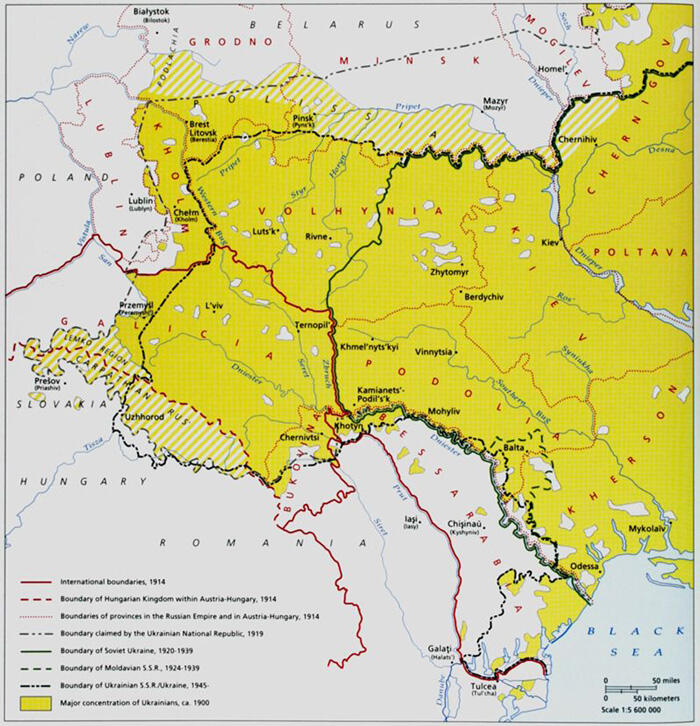By Andi Zhou

As Russia’s invasion of Ukraine grinds on, little clarity has emerged about how the war will end. Is there any compromise that both sides would accept? Will Russian President Vladimir Putin not rest until he can take over Ukraine in its entirety, or would he be content to secure control over a swath of eastern and southern Ukraine? Does Ukrainian President Volodymyr Zelenskyy have any latitude to offer territorial concessions, or would such a proposal be considered so treasonous as to be politically suicidal, if not outright unthinkable?
The history of territorial conflict suggests that prospects for quick compromise are dim. Modern nation-states hold few things to be more sacred than homeland territory. People are willing to make extraordinary sacrifices to defend their national homeland, as Ukrainians have demonstrated so movingly over the past several months. Political scientists have long struggled to understand what it is about territory that stirs such passion. If territory was worth only as much as the resources it holds, then negotiations over territory should be fairly straightforward: oil revenues can be shared, or compensated with cash. Others view territorial concerns as an anachronism, an outdated obsession in a globalized world where connectivity has supplanted territory as the source of power and wealth. And yet, states fight wars over territory more often than over any other issue, and territorial wars tend to be more violent and last longer than other types of wars.1
Scholars have come to recognize that territory is much more than a mere commodity. The homeland is a core part of national identity, and as such its significance cannot be reduced to natural resources or military advantage. But while the bibliography on nationalism is a long one, it tells us precious little about how such beliefs actually motivate behavior. How do we come to adopt a territorial identity, and how does it shape the way we undertake political action? New work in political science, including my own research, is beginning to shed light on these questions. In one project, I look at a seemingly mundane but potentially critical piece of the puzzle: the role of maps.
“This Land Is Your Land”: Maps, Homelands, and Sacrifice
As natural as they may seem to us today, deep homeland allegiances are in fact relatively new to human history. For millennia, humans’ affinity for land extended little further than their immediate experience—the terrain on which they hunted and the fields they farmed. Aristotle fretted that citizens would fail to defend the city-state against outside attack unless they personally owned property on the frontier.2 Political allegiances lay primarily with lords and monarchs, not abstract national homelands. As late as the eighteenth century, Goethe wrote of his fellow German speakers, “We all felt for Frederick [the Great], but what did we care for Prussia?”3
Indeed, homeland identity was impossible to imagine without the modern territorial state. Instead of jealously guarding claims to exclusive authority within precisely defined borders, ancient kingdoms accepted fading and overlapping zones of control. The empires of precolonial Africa and Asia shaded gradually from one into another,4 and in medieval Europe, peasants in a particular village might pay taxes to one lord but submit to the courts of another.5 The creation of territorial states required both technological and cognitive changes: not only the capacity of rulers to project power right up to the edges of their domains, but also the ability to imagine as a coherent whole an expanse of space far larger than any individual can experience at once, or even over a lifetime.
Advances in military technology and infrastructure took care of the first condition, but the second required a quantum leap in a wholly different field: mapping. You cannot picture in your mind a physical space larger than what you can experience yourself without a visual aid. Before the Renaissance, maps were simply incapable of representing space in this way. But between the sixteenth and nineteenth centuries, advances in cartography enabled European leaders to begin thinking of political control as being over bounded space rather than people and objects.6 Colonialism then imposed this conception of territoriality on the rest of the world.

As they transformed how rulers imagined their dominions, maps also changed how the masses related to the state. They played a pivotal role in enabling the rise of nationalism—the transformation of “peasants into Frenchmen,” in historian Eugen Weber’s words.7 Only with maps could France, for example, assume a visual identity that could be disseminated across a vast population that still preferred to identify as Breton or Basque or Provençal. The advent of national education gave states a way to ensure that every citizen would grow up immersed in a common vocabulary of national symbols, including the national map.
Political scientist Benedict Anderson famously described nations as “imagined communities,”8 in that they require us to identify with many more people than we could possibly know directly. We rely on maps to carry out this “imagining.” Maps hold power not just because we recognize the shape on the map as our own homeland, but because we know every other member of the nation recognizes it as theirs, too. And unlike other universal national symbols, such as flags or mottos, maps convey direct information about national membership: borders literally divide who is in from who is out. Maps therefore tell us whom we have a duty to help in times of need, and knowing that everyone else sees the same map reassures us that they will have our back as well.9 Maps are a constant reminder of what we owe to our compatriots and what they owe to us, turning mere land into “motherlands” worthy of reverence and sacrifice.
Using Experiments to Test the Power of Maps
Do maps really inspire people to fight and die for the homeland? To find out, I teamed up with Hein Goemans at the University of Rochester (who originated much of the above theory) Michael Weintraub at the Universidad de los Andes, and Joel Selway at Brigham Young University to run a series of experiments that test whether seeing a map of the homeland makes people express greater willingness to sacrifice on its behalf. We embedded these experiments in surveys that were run in Argentina, Bolivia, Chile, Colombia, and Thailand. In each survey, we asked respondents whether they were willing to risk their lives, pay higher taxes, or endure intense suffering to defend their homeland, and we used these responses to construct a “self-sacrifice scale.” Some randomly selected respondents were shown a simple map of their country while they answered these questions. By comparing the responses of people who were shown a map to those who were not, we can measure how the map influenced their answers.
Our main result, as it so often is in academic research, is “it depends.” We found that the map raised willingness to sacrifice in Argentina, Bolivia, and Thailand, but not in Chile and Colombia. Context clearly matters: Chile is in the midst of a contentious drafting process for a new constitution, and Colombia is still rebuilding from its decades-long civil war. In both cases, we might expect the resonance of national symbols, including the homeland map, to be at a low ebb. Even in our positive cases, we found that the influence of maps can be finicky. In Thailand, in addition to the standard national map, we showed two variants: one that marks “lost” territories that Thailand historically controlled but no longer does today, and another that highlights Lanna province in the northeast, where a separatist movement has simmered in recent years, in a different color (see figures below). Both the standard map and the “lost territories” map raised willingness to self-sacrifice, but the Lanna province map did not.

Our results offer both reassurance and caution for our theory. Maps can indeed inspire people to sacrifice for the homeland, but they must be the right maps in the right context. The maps that have this effect are those to which people have already been exposed for years or generations. It doesn’t work to show people the “wrong” map or a map they haven’t seen before. Symbolic power is not inherent to maps; rather, maps are empty vessels for the meanings that people bring to them.
This process is imperfect—we see in Chile and Colombia that meaning-making can fall short even for the “right” maps. We also do not claim that maps are the only inspiration for sacrifice for the homeland, or necessarily even the most important. We argue that maps are indispensable for that purpose but insufficient on their own, leaving myriad other possible drivers for future research.
Back to Ukraine
While we did not have the opportunity to run our study in Ukraine or Russia, our findings do suggest a few ways in which maps may be playing a role in the ongoing war. First, even though Ukraine essentially chose not to resist Russia’s annexation of Crimea in 2014 and lost effective control over large parts of its eastern regions to Russian-backed separatists around the same time, Ukraine has never officially recognized these territorial losses. While clinging to claims over territory that one no longer controls may seem like a mere symbolic gesture, our research suggests that symbolic gestures have real consequences—namely, that changing core national symbols too often can dilute their motivating power. If Ukraine had revised its maps after the losses of 2014, it is unclear how effective those maps would have been in rallying the Ukrainian people to fight another invasion just eight years later. You may have seen maps of Ukraine posted on social media or even printed on T-shirts as symbols of defiance and solidarity. The fact that all of these maps include Crimea may be important for preserving the map’s power to inspire, even though recovering Crimea is hardly Ukraine’s most urgent priority in the war.

Second, it is notable that after annexing Crimea in 2014, Russia has not revised its maps any further to depict additional Ukrainian territory as being part of Russia.10 One can only speculate as to Vladimir Putin’s ultimate aims in this conflict: he has yet to publicly declare an intention to annex all of Ukraine, but he has also sought to delegitimize Ukraine’s territorial sovereignty in his speeches. Regardless, our research suggests that if Putin were to ever formally claim Ukraine to be part of Russia, he would face an uphill battle in mobilizing Russians to sacrifice for Ukrainian territory as their own. The “stickiness” of maps can constrain leaders as much as it empowers them: even with the propaganda machine in overdrive, a new map of Russia may not resonate immediately with the public. Putin, in short, would have to work against the maps that his people already know. Given this, we might speculate that Ukraine enjoys a cartographic advantage over Russia—and while it may not win the war on its own, it may explain some of Ukraine’s striking overachievement on the battlefield.
 Andi Zhou is a Graduate Student Associate at the Weatherhead Center for International Affairs. He is a PhD candidate in the Department of Government at Harvard University. His research interests include territorial conflict and territorial identity, nationalism, political communication, and political psychology.
Andi Zhou is a Graduate Student Associate at the Weatherhead Center for International Affairs. He is a PhD candidate in the Department of Government at Harvard University. His research interests include territorial conflict and territorial identity, nationalism, political communication, and political psychology.
Captions
- Ukrainian National Guardsman Evghenii Shpakov secures a beach landing site before multinational partners participating in Sea Breeze 2016 conduct an amphibious landing demonstration in Odessa, Ukraine July 27. Sea Breeze is an air, land and maritime exercise designed to improve maritime safety, security and stability in the Black Sea. Credit: U.S. Navy photo by Mass Communication Specialist 1st Class Justin Stumberg/Released
- Tabula Novarum Insularum, Quas Diversis Respectibus Occidentales & Indianas uocant. Munster's map of America is the earliest map to show all of North and South America in a true continental form. The first edition of the map appeared in Munster's Geographia, first published in 1540. However, it was the map's inclusion in the 1544 edition of Munster's Cosmographia that forever caused America to be the name of the New World, perpetuating Waldseemuller's choice of names in a popular and widely disseminated work. Munster's map is the earliest map of all of America and the first to name the Pacific Ocean (Mare Pacificum). The depiction of North America is dominated by one of the most dramatic geographic misconceptions to be found on early maps—the so-called Sea of Verrazzano. The Pacific cuts deeply into North America so that the part of the coastline at this point is a narrow isthmus between two oceans. This was the result of Verrazzano mistaking the waters to the west of the Outer Banks, the long barrier islands along North Carolina as the Pacific. The division of the New World between Spain and Portugal Spain and Portugal is recognized on the map by the Castille and Leon flag planted in Puerto Rico, here called Sciana. The map includes a host of firsts, too many to include in this description. Includes a very early appearance of the Straits of Magellan, along with his ship Victoria in the Pacific. Earliest appearance of Japan on a map, predating European contact and based solely legends, such as Marco Polo. The Yucatan Peninsula is shown as an Island. Lake Temistan empties into the Caribbean. The map depicts cannibals in South America and names Florida. Credit: The Barry Lawrence Ruderman Map Collection, Stanford Libraries (CC BY-NC-SA 3.0)
- Maps of Thailand used in survey. Credit: Joel Selway
- Ukraine. Maps, Ukraine. n.d. Credit: provided by Harvard University
References
1. Monica Duffy Toft, “Territory and War,” Journal of Peace Research 51, no. 2 (2014): 185–98.2. Aristotle, Politics, 1330a.13–20.
3. Hans Joachim Morgenthau, Politics Among Nations: The Struggle for Power and Peace, 5th ed. [rev. and reset] (New York: Knopf; distributed by Random House, 1972), 110.
4. Jeffrey Herbst, States and Power in Africa: Comparative Lessons in Authority and Control, STU-Student edition, 2 (Princeton University Press, 2000); Sugata Bose, A Hundred Horizons: The Indian Ocean in the Age of Global Empire (Cambridge: Harvard University Press, 2009).
5. Jordan Branch, The Cartographic State: Maps, Territory and the Origins of Sovereignty, Cambridge Studies in International Relations; 127 (New York: Cambridge University Press, 2014).
6. Branch.
7. Eugen Weber, Peasants Into Frenchmen: The Modernization of Rural France, 1870–1914 (Stanford University Press, 1976).
8. Benedict Anderson, Imagined Communities: Reflections on the Origin and Spread of Nationalism, Revised edition (London New York: Verso, 2016).
9. H. E. Goemans, “Bounded Communities: Territoriality, Territorial Attachment, and Conflict,” in Territoriality and Conflict in an Era of Globalization, ed. Miles Kahler and Barbara F. Walter (New York: Cambridge University Press, 2006), 25–61.
10. See, for example, the map behind Putin at his December 2021 press conference.
